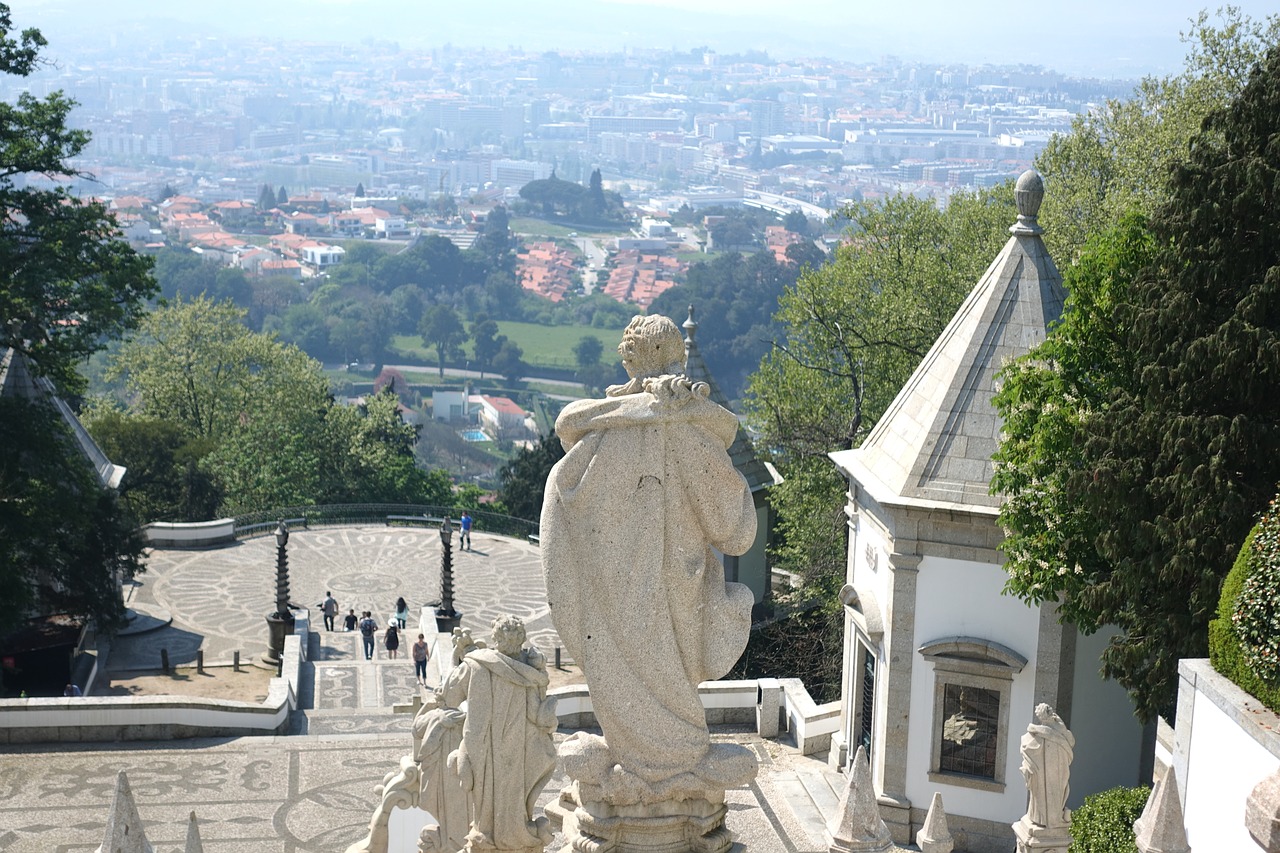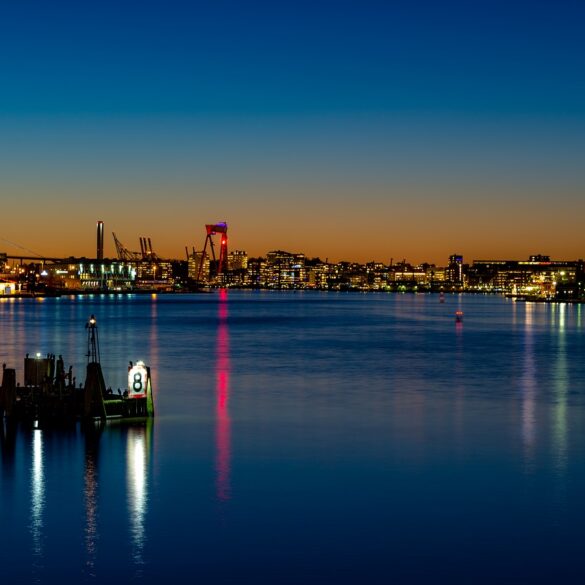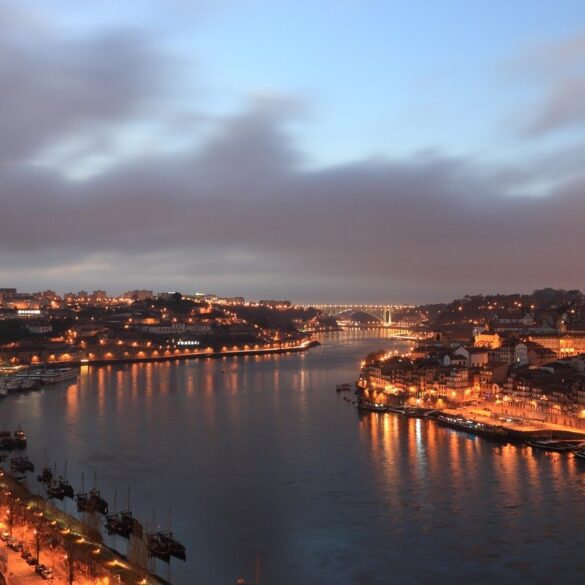
Braga is one of the oldest cities in Portugal and in the 4th century, it also served as an ancient seat of religious power. It is in the northern Minho region and became the seat of the archbishops in Portugal in the 12th century. It remains the most important religious center in the country and boasts a rich collection of chapels, churches, and monasteries. In fact, there are so many of them that it is often known as ‘Portuguese Rome’. The city also hosts some of the most colorful religious festivals in all of Portugal, including the annual Semana Santa (Holy Week).
If you are looking for the top things to check out and the best places to visit in Braga, you can read on to find out:
- Bom Jesus do Monte
This is the most visited tourist attraction in Braga and is high on a hilltop. Since the 14th century, it is a pilgrimage site and attracts a great number of devotees. You have to be devoted to going up the stairway, which has 640 steps and goes up more than 100 meters. The stairs are adorned with a Baroque sculpture for inspiring people when they climb, as they zigzag up the slopes. You can look out for the fountains on the way up, as they are based on the five senses. The goal is a Neoclassical church that was finished in 1834, but the journey is the real appeal, along with the exhilarating views of the city at the top.
- Bom Jesus do Monte Funicular
The funicular railway is another option to explore, as it shuttles up and down the hill’s side. Swiss engineer Nikolaus Riggenbach oversaw the installation of the system in the 1880s. Before its installation, there were horsecars that were vehicles on rails that horses had to haul up the hill. The replacement system is spectacular and it is also the world’s oldest funicular that uses water counterbalancing. The cars run in the opposite directions at the same time; the one that comes down the hill is weighed down with water, which powers the lighter one up.
- Braga Cathedral
The city’s cathedral is a must-see for every architecture enthusiast, as it has a bit of every architectural movement. Modifications have been made to the building a number of times, so it has been furnished with Gothic, Baroque, Renaissance, Romanesque and Manueline decoration and elements. It is easy to identify the Romanesque triple nave, but the two Baroque organs from cases that are covered with exuberant gilded wood from 1737 and 1739 will distract you right away.
- Garden of Santa Barbara
Located next to the city’s medieval episcopal palace is this exquisite formal garden. The Garden of Santa Barbara is bounded by the beautiful north walls of the palace topped by typically pointed merlons. The garden is ordered and strict, with manicured boxwood topiaries and hedges, and geometric lines. There is a riot of colorful flowers inside the borders in the summer, which attract a lot of birds.
- Sanctuary of Our Lady of Sameiro
Another hilltop sanctuary that’s set even higher is called the Sanctuary of Our Lady of Sameiro. It is south of Bom Jesus do Monte and is 556 meters above sea level. It is one of the most frequented pilgrimage sites in Portugal but is appears to be relatively quiet as opposed to its neighbor in the north. The church here dates to the 1860s, so it is relatively new, but it does have an important Marian shrine that gets a lot of devotees between June 1st and August 31st. For others, it is just about the view. There is also a huge terrace in front where you can meditate.
- Biscainhos Museum
This house museum is located on its namesake square in a spectacular 17th and 18th-century aristocratic palace that boasts sumptuous gardens. It serves as a window into the lives of the nobility of Portugal and you can find plenty of refined decoration inside. There are some masterful stucco moldings, and magnificent azulejos, along with collections of ceramics, glassware, musical instruments, jewelry, and furniture. The grounds outside are spread across a hectare and are enriched with sculptures and fountains that were landscaped in 1750. They are the finest 18th-century gardens in the country.
- Raio Palace
A knight of the Order of Christ and a wealthy merchant, João Duarte de Faria commissioned this divine palace in the center of Braga in the 1750s. It often stops people in their tracks because its walls are covered with blue azulejos that contrast with the graceful granite carvings on the window frames and the doorways. This palace can be found next to Braga’s hospital and there is a free museum inside with old medical artifacts, along with information regarding the building and its recent restoration.
- Arco da Porta Nova
This triumphal arch can be found at the eastern entrance of Braga’s historic center and it is definitely a head-turner. André Soares, the sculptor based in Braga, crafted this in the middle of the 18th century and he has also made contributions to a number of sculptures and fountains in the city. It was used for replacing an old gateway and the arch has a different character, depending on the side you decide to approach it from. The west side is the bolder one, as it boasts a coat of arms along with pyramid pinnacles, while the east side is understated with a Marian sculpture.
- Festa de São João
The most colorful and fun night in the city of Braga is June 23rd. This is the celebration of the birth of St. John the Baptist and is called São João. He is the patron saint of the city and it takes two weeks to get ready for it, as it involves decorating the parade route. There are parades featuring traditional Minho dresses and traditional musicians playing accordions during the day. Restaurants serve grilled sardines and a typical vegetable broth called Caldo Verde.

